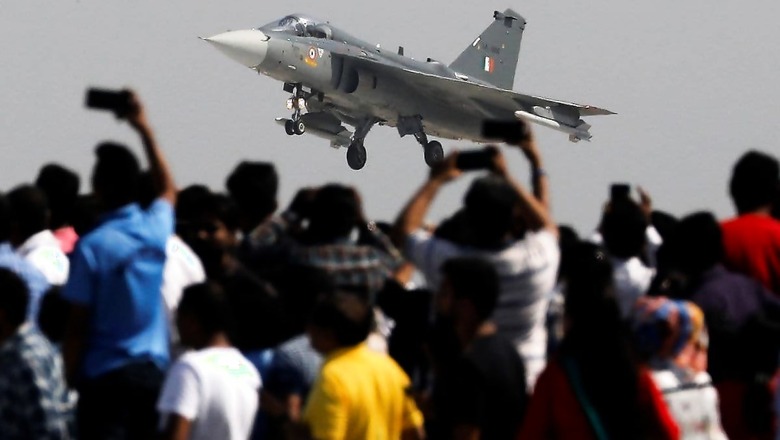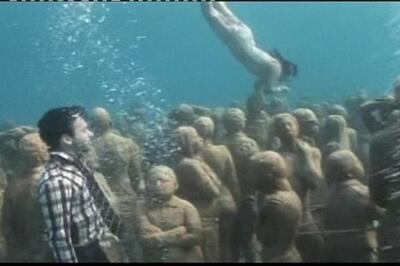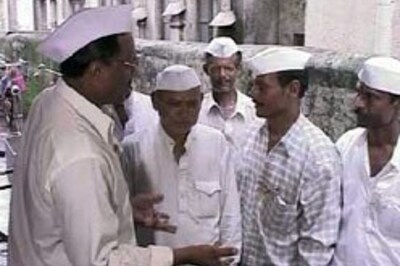
views
On August 27, well-known Indian film star Kangana Ranaut tweeted about the release of a motion picture starring her called ‘Tejas’. This was the start of a frenzy on the Internet with Google alone receiving as many as 300,000 hits for information on the Tejas in under 3 hours.
The tweet also included a stylised picture, clearly made on CGI, and immediately attracted a million eyeballs. The magnetic pull of star power was clearly on display here, and the Tejas aircraft was finally receiving the attention it rightly deserved, despite it being in design and development for over 35 years.
I have been associated with the Tejas programme since 1992 after graduating from the Air Force Test Pilot School, and can speak with some authority on this aircraft. The Tejas is a grandiose programme intended to leapfrog India into the 4th generation fighter aircraft manufacturing field after a long hiatus in designing indigenous fighters. It all began in 1983, when the Indian Air Force, in anticipation of the life expiry of the MiG-21 fleet, requested the development of a Light Combat Aircraft or LCA as the Tejas was known then. Thirty-seven years have gone by and the Tejas has survived many trials and tribulations before finally metamorphising into a war machine. It has weathered the financial crisis of the 1980s, the atomic sanctions of the 90s and a thousand or more issues, before finally taking to the skies on January 4, 2001.
I vividly recall that day. Wing Commander Rajiv Kothiyal was the designated Test Pilot for the first flight and I was the back-up. I was to chase the LCA Technology Demonstrator-1 or TD-1 in short, in a Mirage 2000, while a second Mirage had the then CAS of the IAF, Air Chief Marshal AY Tipnis, onboard. The first prototype of the LCA, TD-1, had been made a few years earlier and had been rolled out in 1995. Since then it had undergone numerous tests and had been repeatedly stripped and rebuilt, as we were all doing this for the first time.
This repeated abuse, which aircraft are rarely subjected to, had resulted in all the removable panels being scratched and with a weathered look which did not inspire much confidence. The aircraft shin had the look of a well-used DTC bus, and we used to jokingly refer to TD-1 as a Khadi Gram Udyog product. The Programme Director of the LCA was Dr Kota Harinarayana. It was his dedicated effort which progressed Tejas to see the light of day. TD-1 was allotted the tail number of KH-2001 in his honour and the second prototype, TD-2, was named KH-2002 The first flight was near flawless.
The only major issue was we lost the telemetry signal the moment the LCA was airborne and the 600 odd critical parameters which were displayed to the scientist on the ground to monitor the flight suddenly ceased. This was a tense moment, and the planned flight was quickly cut short and a flawless landing executed. Wg Cdr Rajiv Kothiyal was awarded a Kirti Chakra for this pioneering flight fraught with so much of uncertainty. He was also awarded the ‘Iven C Kincheloe Award’, which is considered the equivalent of the Oscar in the field of flight testing.
The announcement of the movie ‘Tejas’ has given rise to a number of questions about the aircraft. Some of these are answered below.
What is the Tejas? The Tejas is a single engine, supersonic, delta wing, fourth generation fighter aircraft. The aircraft was designed and developed by the Aeronautical Development Agency, which is a part of DRDO. The Tejas was inducted into squadron service in the IAF in 2016 and has successfully completed over 10,000 hours of flight testing and squadron flying without a single crash. This is indeed an outstanding and singular feat and we have much to be proud about, especially when compared to the peers of the Tejas.
Is Tejas better than the Rafale? The Tejas was designed to replace the MiG-21, so to compare it to the Rafale would be unfair. The Rafale is a much larger aircraft and with two engines. The max takeoff weight of the Rafale is about two times that of the Tejas.
Why is the Tejas a 4th generation aircraft and not a 5th generation aircraft? The design of the Tejas started in 1985 and does not incorporate many features which are considered essential for it to be a fifth generation aircraft. These include stealth and super cruise.
Is it better than the Pakistani JF-17? The JF-17 is to a large extent a highly upgraded and modified MiG-21 aircraft and cannot be considered a rival to the Tejas in technology. The Tejas is a 4 channel digital fly-by-wire aircraft with composite wing and fuselage. The JF-17 is in comparison more conventional in nature and is equipped with an old generation RD-93 engine from Russia, which is prone to failure and is inefficient, while the Tejas has the more modern and modular F-404 IN20 engine.
Is make-in-India the way ahead? If India wants to become a leading player in world affairs, it has to have an indigenous capability to manufacture its defence equipment. Importing this from other countries makes us dependent on them and only improves the standard of living of the nation exporting to us.
Will we have to compromise if we are stuck with make-in-India? ‘Atmanirbharta’ does not mean mediocrity. It means that we would be willing to pay more for a product which is made in India, with equal or better quality. Such a policy may result in higher cost in the short term, but will ultimately result in the setting up of infrastructure in India, which would help in the design of world-class products that are cost effective too.
(The author is a retired officer of the Indian Air Force, who served as Air Officer Commanding-in-Chief , Western Air Command from March 1, 2019, to October 31, 2019. Views expressed are personal)




















Comments
0 comment